Mark Twain
The first thing that strikes you about Antwerp is the number of bicycles . They certainly are the people's mode of travel. Not the modern mountain bike or racing style that we tend to favour in New Zealand but almost retro – albeit new retro. The city is geared for the bicycle [pun unintended], being very flat. They have cycle lanes on virtually every road and abundant bicycle stands throughout the city. The city has a scheme where you can pick up a city bike from set points and you can use it for set periods of time. Up to 30 minutes it is free, after that you start to pay but at a very reasonable rate. [Taxis must hate them.] Not sure what happens if you don’t return it but no doubt they have that worked out. Would it work in NZ? I suspect our lot would spend most of their time trying to work out how to beat the system. However, here there appears to be a stronger sense of doing the right thing, possibly a stronger community spirit. Whatever the reason, it seems to work very well. They are a very distinctive red colour with a large "A" on the frame and you see them being used everywhere .
Antwerp over the ages has been much like many other European cities - bought, sold, traded, beaten up, pillaged and then reborn. Half the country speaks Flemish [very similar to Dutch] and the other half, French. At one point, a few centuries ago, Antwerp was the largest port on the North Sea coast. It came into prominence again after the Normandy landings in 2nd World War when the Allies needed a port further east than Normandy to support the advance into Germany. Antwerp is the capital of Flanders which has memories for Kiwis from the 1st World War. The port has now regained its former glory status and is one of the largest in Europe, handling over 180 million tonnes of cargo a year – it is also the world’s largest banana port - so I guess that makes the monkeys in city zoo very happy. The port itself is on the River Scheldte and is located about 50 kms inland, protected against many of the tidal problems facing those on the coast itself. However, they do have to contend with the occasional flood .
Antwerp's population is just over half a million and appears to be reasonably affluent [maybe able to be so because lots are not having to maintain a car]. There also appears to be a growing Muslim population [much like the Netherlands next door].
While our main reason for coming to Antwerp was to watch Kieren compete in the dance competition, we did get to see some of the sights:
- Cathedral of Our Lady. Construction of this church began in the 14th Century and finished about 150 years later. At the time of its construction, it was the largest Gothic church in the then Netherlands. The church houses four works by Rubens who was a local lad [along with Van Dyk]. The church was built from the taxes on the people and they continue the theme today by requiring visitors to pay an entry fee. That mumble aside, it is truly an impressive building.
- MAS. The MAS is a square shaped building about 10 storeys high. The façade is made of Indian red sandstone with curved glass panel inserts. The latter gives the impression of the red stone sections floating in the air, while the rippled glass lends interest to the design. The MAS reportedly houses almost half a million artefacts tracing the history of Antwerp. We took their word for that part because for us, the main attraction of the MAS was the building itself and the free access it offered to its roof for a panorama view of the city and the port.
- Mode Museum. The Mode Museum is a textile museum. Over the centuries, Antwerp had a flourishing silk textile trade and produced material for many of the great fashion designers – Balenciaga, Givenchy, Yves St Laurent, Dior. The museum had a display of some the materials and finished designs and even the old soldier in Stu was impressed.
- Rubenshuis. One cannot come to Antwerp without paying homage to the grand master, Peter Paul Rubens. This guy could really paint. He spent eight years in Italy honing up his skills and on his return to Antwerp in 1608, bought a prime piece of real estate then knocked down the house next door and put on an extension. And a bloody impressive extension, it is. While the old house is in the local style, the extension is in the then Italian style - rounded arches, major sculptures, etc. He ran his artist’s school from the extension and in the style of the day, many works which have his name on them were actually collaborations with a number of his junior [albeit very talented] artists. [Sir} Anthony Van Dyk, the renowned portrait painter was Rubens' chief assistant in the early 1600s.
- Diamond District. Antwerp is the diamond processing capital of the world. They apply a strict code of ethics on the source of the raw uncut diamonds to try to combat the blood diamond trade out of Africa. Something like 80% of the total world trade in legitimate diamonds passes through Antwerp and it is a trade that the Belgians jealously guard. We looked around for cast-offs and possible left behinds, but no such luck.
- Belgian Chocolates. Antwerp was reminiscent of Bariloche in Argentina - chocolate shops everywhere. Another "must try" but in moderation - our bags are already near maximum for the flight to Milan [and our waistlines didn't need tempting at this stage of the journey.]
The other thing that the Belgians are renowned for is their beer. They say that there are over 300 different types of beer in Antwerp, ranging from their light varieties [about the same strength as NZ beers] to their strong varieties [about 12% alcohol – just below NZ wine strength] .
We found the Antwerp people generally very proud of their city, extremely friendly and keen to see that visitors had an enjoyable visit. Not having any Dutch or French language skills is no barrier as most people speak English, their 3rd language.
The prime reason we came to Antwerp was the dance competition. Kieren and Emily danced on the last day of the event. It was a very full on day, starting at 9.00 am and finishing almost 12 hours later. They got through the grading session in good shape and got themselves into the A Grade section. They danced extremely well but with the standard being very much higher than in Budapest last year, they knew that it was going to be no easy task. Regrettably, they were unable to make it to the final six, being knocked out in the semi-final. [Mum and Dad felt they were robbed, but then I guess that’s what Mums and Dads do.] In truth though, the finals of the Women’s Standard and the Men’s Latin were absolutely amazing .
Antwerp has been a very pleasant surprise and definitely one to include on your list if you are
venturing into Europe. If you do, however, make sure you pack an umbrella. One thing you can guarantee is that at some point of your visit, it will rain.
Tomorrow we leave Antwerp and head on to Milan to start our Italian Holiday. And so, on to Milan...

 Antwerp, Antwerpen, Belgium
Antwerp, Antwerpen, Belgium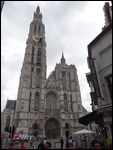
![Museum aan de Stroom [MAS]](http://images2.travelark.org/images/sntj/thumbnail.large.1.1376125843.the-museum-aan-de-stroom-mas.jpg)
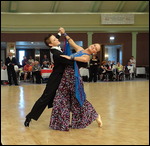
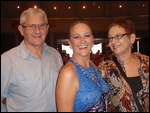






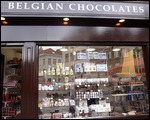
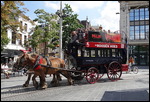



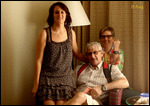
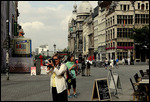


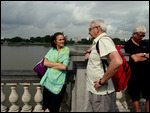

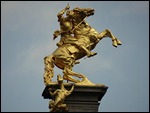
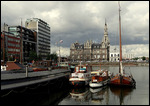
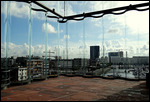

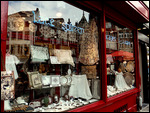
2025-05-23